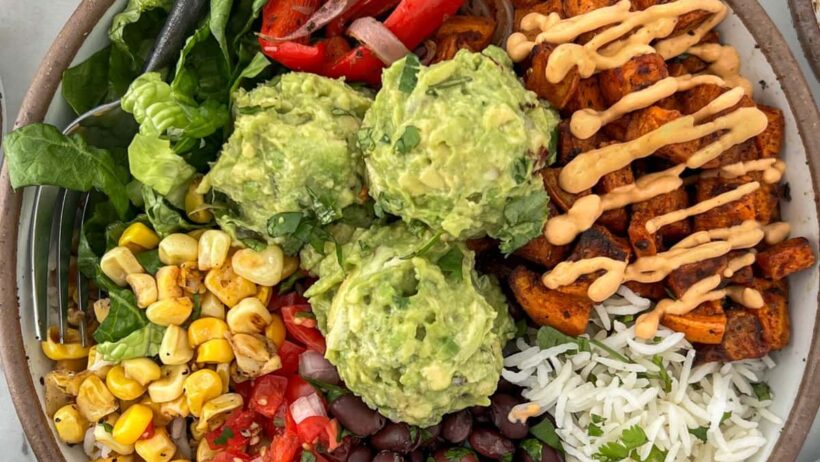If you’ve recently embraced a plant-based lifestyle or are looking to optimize your diet for serious muscle building, you’ve landed in the right place. We’re going to walk through the essential ingredients, practical strategies, and—most importantly—the delicious recipes that will help you hit your protein goals, recover faster, and build the physique you want.
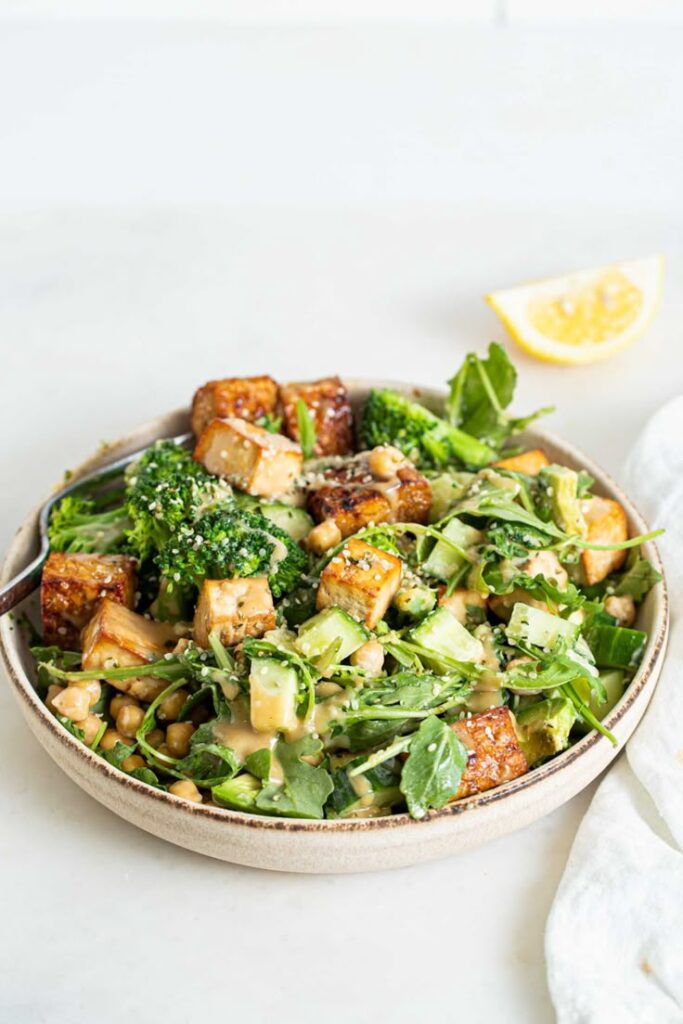
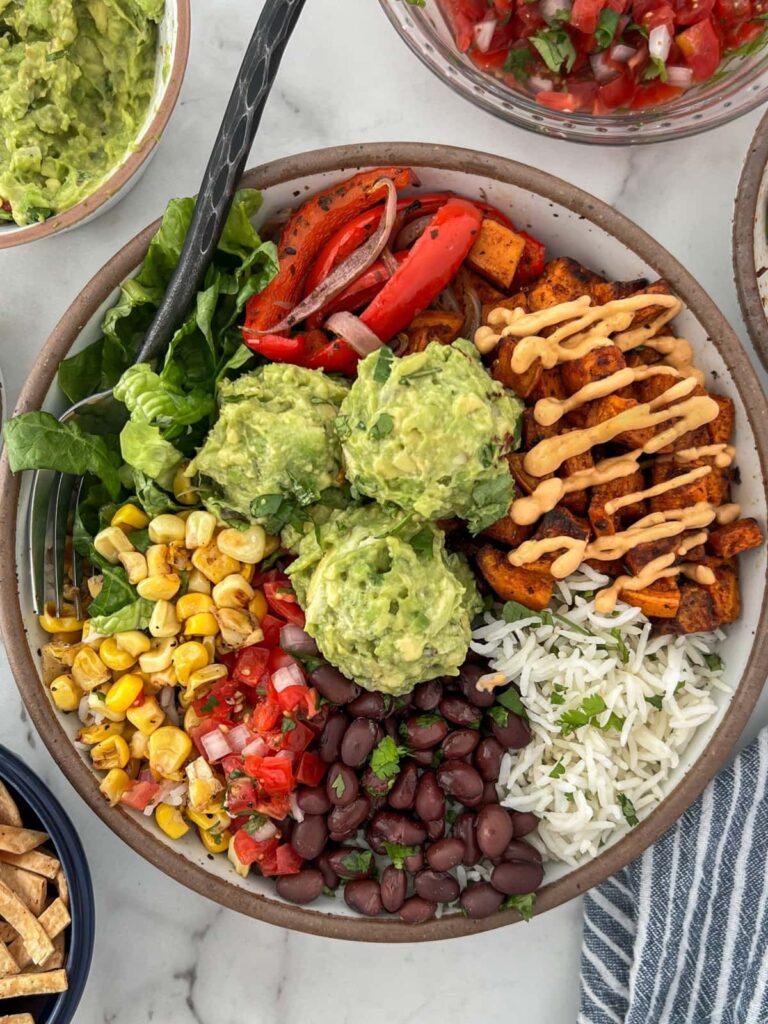
Part 1: Unlocking the Power of Plant Protein
The secret to success isn’t eating just one magic bean; it’s understanding and utilizing a variety of high-density plant proteins. Your body is smart, and it combines the amino acids you eat throughout the day. By focusing on these core groups, you ensure you always have the building blocks for muscle repair.
1. The Soy Superstars: Complete Proteins
Soy products are the gold standard because they are complete proteins, containing all nine essential amino acids necessary for muscle synthesis. They should be a foundation of your lifting diet.
- Tofu (Extra-Firm): The neutral canvas for your culinary creations. A 3 oz serving provides about 10g of protein. Pressing it is crucial for texture! Use it in scrambles, baked cubes, or blended into creamy sauces.
- Tempeh: Tofu’s nuttier, firmer cousin. Because it’s a fermented whole soybean, it often packs more protein—around 16g per 3 oz. Its hearty, chewy texture makes it perfect for crumbles, chili, or slicing into “bacon.”
- Edamame: These little pods are the perfect snack. One cup of shelled edamame delivers approximately 18g of complete protein, making it an ideal choice right after a training session.
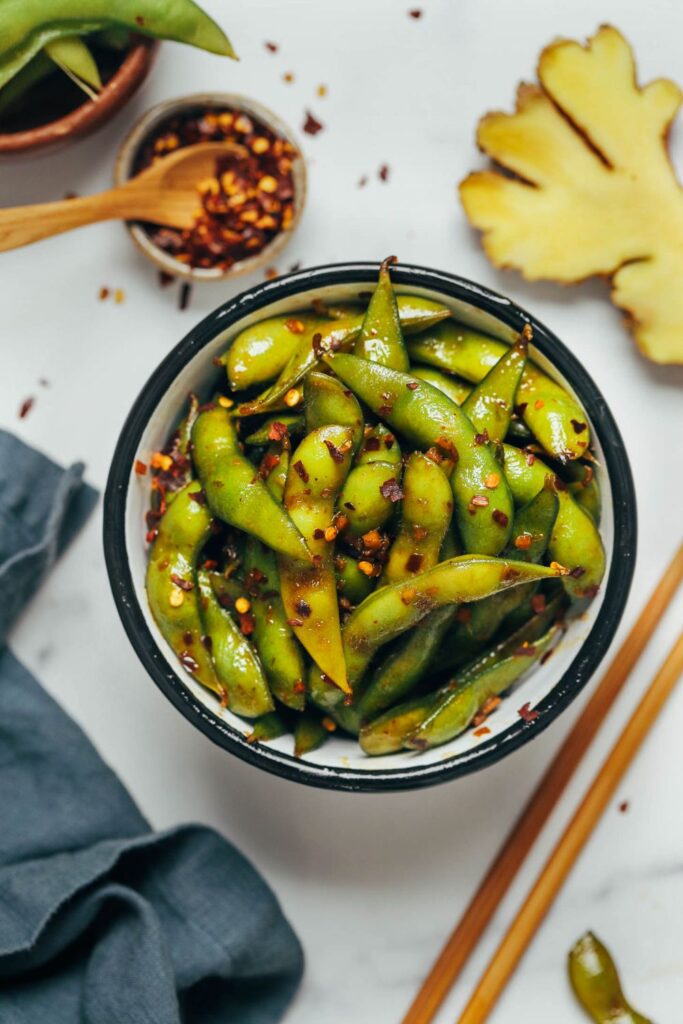
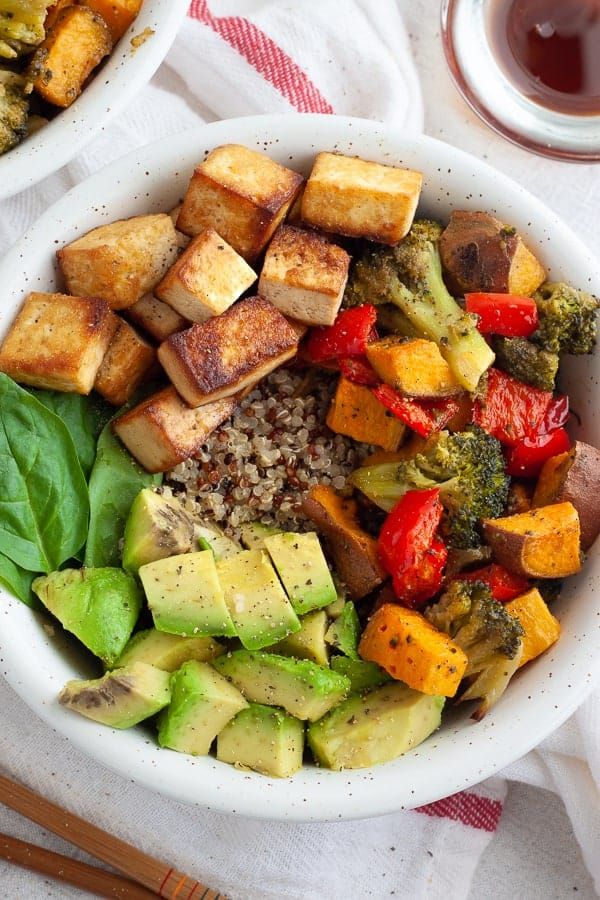
2. The Concentrated Powerhouses: Seitan and Protein Powder
These are your fast lanes to high protein counts.
- Seitan (Wheat Gluten): This is the most protein-dense whole food available on a plant-based diet, often exceeding 25g per 3 oz. Use it for grilling, slicing into “steaks,” or making high-protein cutlets.
- Vegan Protein Powder: When you need quick, guaranteed protein (especially post-workout or to fortify meals), powder is your best friend. Pea, soy, or brown rice blends are the most efficient choices.
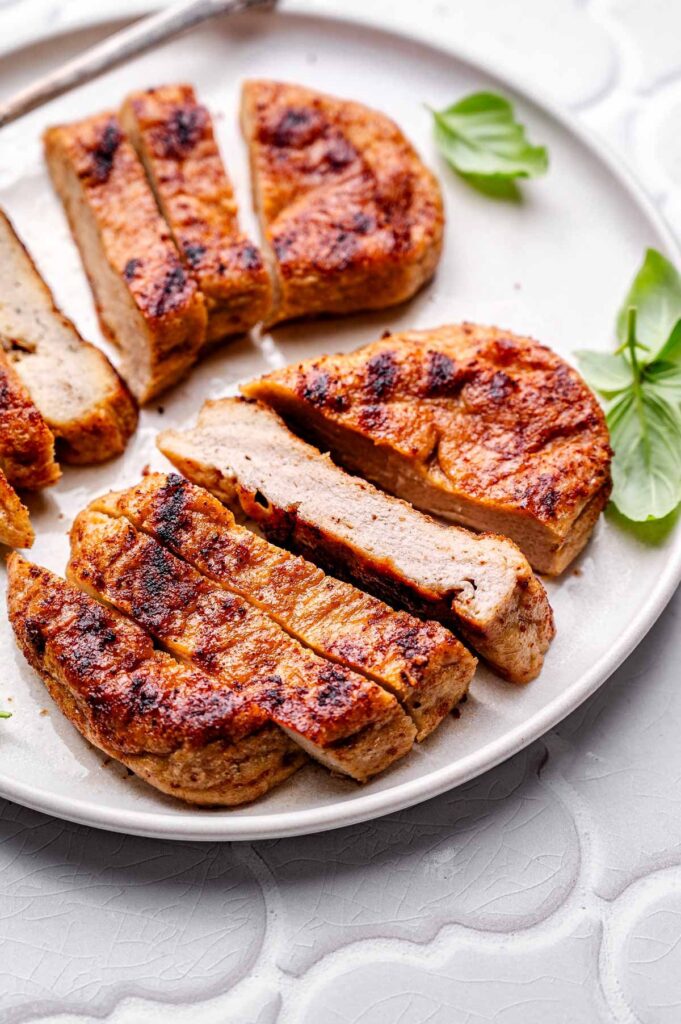
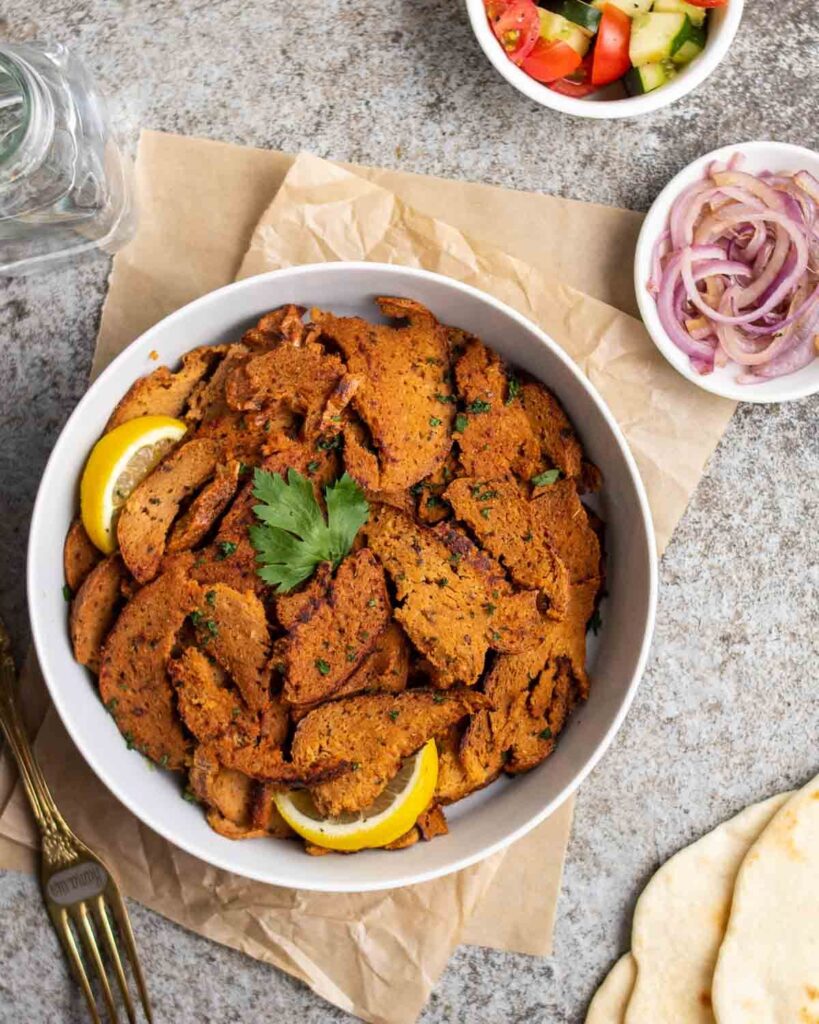
3. The Fiber Heroes: Legumes and Grains
Beans, lentils, and chickpeas are muscle-building staples because they are loaded with fiber, iron, and slow-releasing energy. They are lower in one or two essential amino acids, which is why we pair them strategically.
- Lentils: Fast-cooking and affordable. One cup of cooked lentils provides around 18g of protein. Use them in curries, soups, or as the base for high-protein “meatballs.”
- Quinoa: The amazing seed that acts like a grain! It’s also a complete protein, offering around 8g per cooked cup. Use it as a base for salads, bowls, or even in place of oatmeal.
Part 2: High-Protein Recipes for Maximum Gains
Consistency is key when building muscle. These recipes are designed to be delicious, easy to prep, and protein-packed, ensuring you hit your macros every single day.
Breakfast: Set the Anabolic Tone
Your first meal needs a massive protein hit to kickstart muscle repair and keep you full.
1. The 30g Tofu Scramble Power Bowl
- Protein Base: 5 oz of pressed, crumbled extra-firm tofu and 1/4 cup of crumbled soy chorizo.
- Directions: Sauté diced onion, mushrooms, and a handful of spinach. Add the crumbled tofu and cook until dry. Stir in 2 Tbsp of nutritional yeast (for that cheesy flavor and essential Vitamin B12) and seasonings like turmeric and garlic powder.
- To Finish: Serve alongside 1/2 cup of cooked black beans (seasoned with cumin) and top the whole bowl with a generous sprinkle of hemp seeds (10g of protein per 3 Tbsp).
2. Bodybuilder’s Overnight Oats
- Protein Base: Mix 1/2 cup Rolled Oats with 1 scoop of Vegan Protein Powder (vanilla or plain) and 1 cup of Soy Milk.
- Boosters: Stir in 1 Tbsp of chia seeds and 1 Tbsp of flax seeds.
- The Next Morning: The mixture will be thick and creamy. Top with 2 Tbsp of peanut butter and sliced berries. This is an effortless way to start with 25g to 30g of protein.
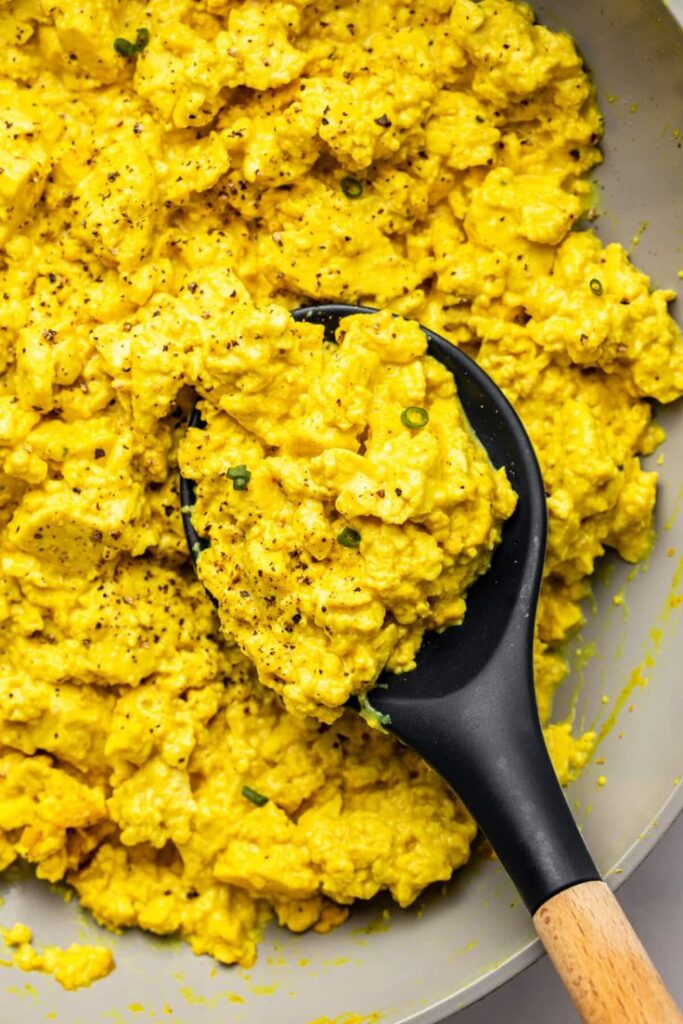

Lunch & Dinner: Fueling Recovery
Focus on meals that pair a dense protein source with a complex carbohydrate to replenish muscle glycogen.
3. Seitan “Steak” & Lemon Quinoa Plate (40g+ Protein)
- Protein Base: 5 oz of Seitan sliced into cutlets. Marinate briefly in soy sauce, liquid smoke, and black pepper, then pan-sear or grill until crispy.
- Carb/Protein Side: 1 cup of cooked Quinoa tossed with fresh lemon juice, garlic, and chopped parsley.
- Veggies: Serve with 2 cups of steamed or roasted asparagus or green beans. The seitan provides massive protein density, while the quinoa ensures a complete amino acid profile.
4. Tempeh Bolognese with Protein Pasta (35g+ Protein)
This is a comfort food makeover.
- Protein Base: 2 oz dry Red Lentil or Chickpea Pasta (your protein-boosted carb source).
- Sauce: Crumble 3 oz of Tempeh and sauté it with onion and garlic until browned. Mix in marinara sauce and season with Italian herbs.
- Boosters: Stir in 1/2 cup of shelled edamame (or peas) and 2 Tbsp of nutritional yeast right at the end for a creamy, high-protein sauce.
5. Loaded Lentil and Black Bean Chili
Perfect for batch cooking!
- Protein Base: Combine 1 can of black beans and 1 cup of cooked brown or green lentils with diced tomatoes, onions, bell peppers, and chili spices.
- The Pairing: Serve over a small bowl of brown rice. The classic pairing of beans and rice is foundational because it creates a perfectly balanced, complete protein, supporting optimal muscle repair.
- Topping: Load it up with chopped cilantro and 1/4 of a sliced avocado for crucial healthy fats.
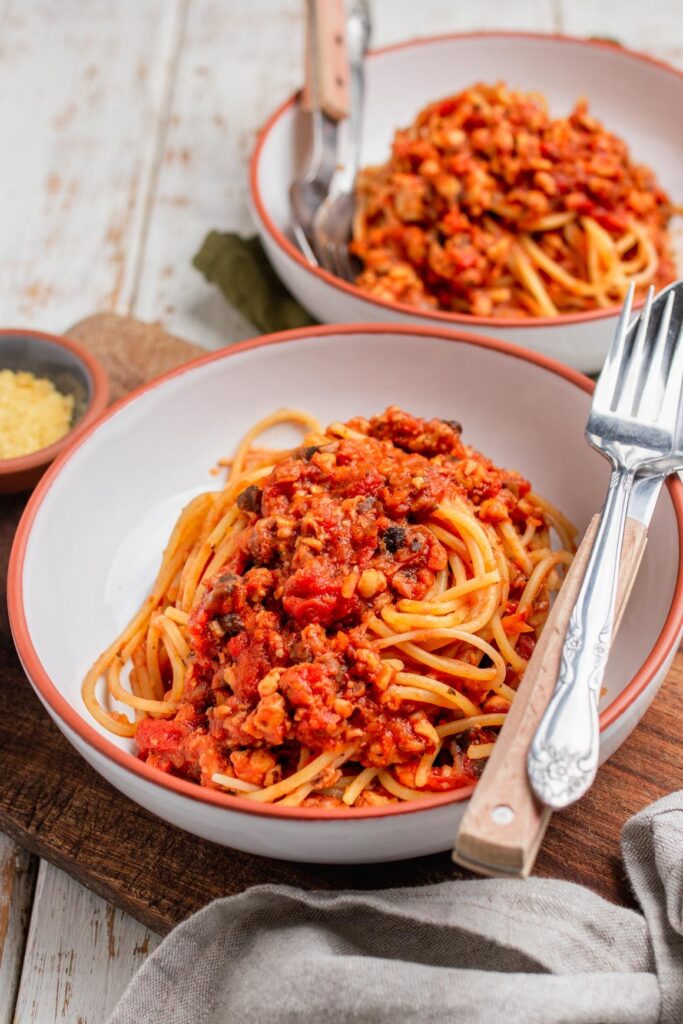

Part 3: Essential Fueling Strategies & Tips
Building muscle on a plant-based diet isn’t just about recipes; it’s about smart habits.
Focus on Caloric Density
A common pitfall for plant-based lifters is that whole, fibrous foods (like lettuce, broccoli, and peppers) are very filling but low in calories. To build muscle, you must maintain a caloric surplus.
The Friendly Solution: Incorporate healthy, calorie-dense foods into every meal:
- Don’t skimp on fats: Add generous amounts of nut butter, avocado, or nuts and seeds to your meals.
- Cooking oil matters: Use olive oil or avocado oil when sautéing or roasting your veggies and proteins.
- Use simple calorie boosters: Stir maple syrup or agave into your coffee, oats, or post-workout shakes.
The Post-Workout Strategy
The 30-60 minute window after your workout is crucial for recovery. You need two things: protein to initiate muscle repair, and fast-acting carbohydrates to replenish glycogen (energy) stores.
6. High-Speed Recovery Smoothie
- The Mix: 1 cup water or soy milk, 1 scoop Vegan Protein Powder, 1 banana (fast carbs), 1 cup frozen mango or berries, and a handful of spinach.
- Why it works: The simple sugars from the fruit are quickly absorbed, driving nutrients (including the protein) straight to your hungry muscles.
7. Edamame Power Snack
- Keep 1 cup of steamed, shelled edamame in your gym bag or fridge for a quick 18g complete protein hit. Pair it with a few dried apricots for immediate carbs.
Batch Prep Like a Pro
Lack of time is the number one enemy of muscle goals. Commit to a weekly prep session to ensure healthy food is always ready.
- Prep Grains: Cook large amounts of quinoa, brown rice, and lentils. These store well for up to five days.
- Prep Proteins: Marinate and bake two blocks of tofu, or boil a big batch of chickpeas. These can be tossed into salads, wraps, or bowls instantly.
- Whip Up a Sauce: Make a big jar of high-protein dressing, like a cashew-based cream sauce or a peanut-tahini dressing. A good sauce makes bland leftovers irresistible.
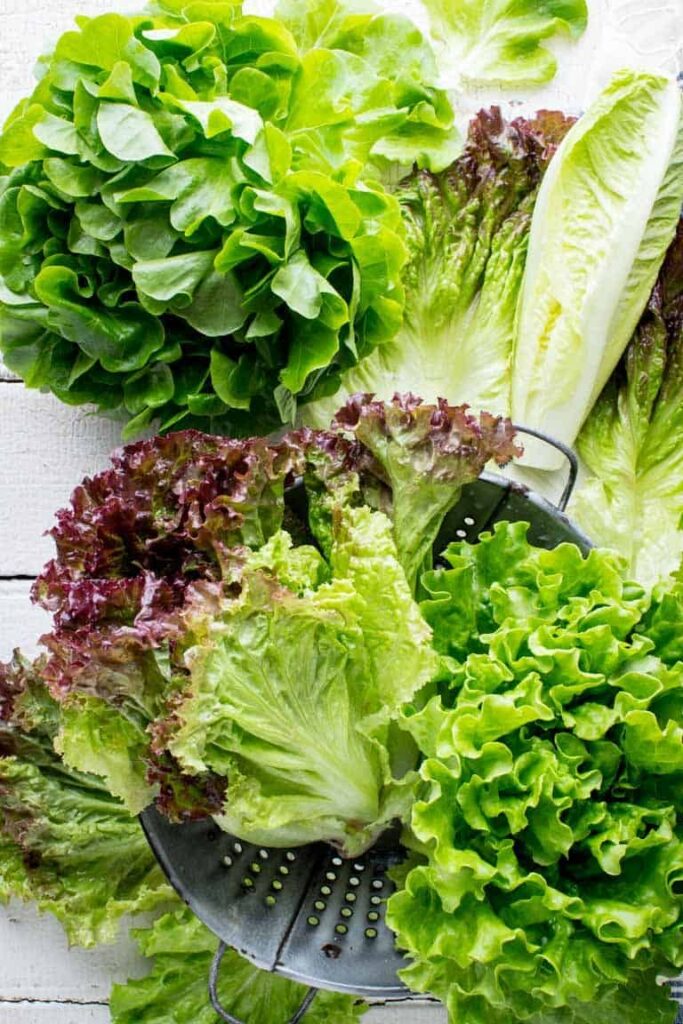
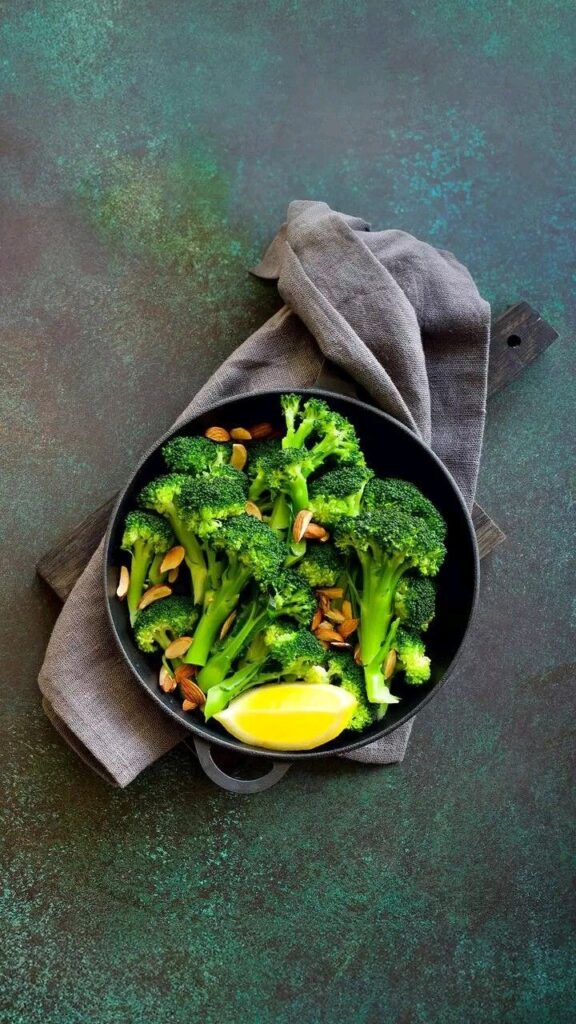
Final Friendly Advice
Remember, your body builds muscle by combining the amino acids you eat throughout the day, not just in one sitting. Focus on the total protein count, prioritize the complete sources (soy, quinoa, seitan, protein powder), and above all, be consistent. Enjoy the process, enjoy the food, and enjoy the gains—because your plant-powered body is more than capable!
What recipes are you most excited to try first?
